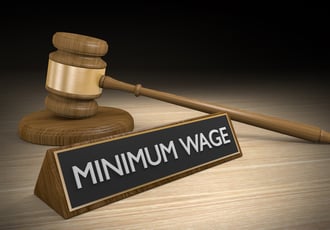 In 2014, the government amended the Employment Standards Act to tie in minimum pay increases with inflation based on the Consumer Price Index of Ontario. This legislature was brought forth in order to ensure a consistent, transparent, and fair method for setting the lowest wages in Ontario and to keep up with inflation while also allowing employers to prepare for the increases in advance. It was also part of the government’s economic plan to create jobs and grow the economy in Ontario.
In 2014, the government amended the Employment Standards Act to tie in minimum pay increases with inflation based on the Consumer Price Index of Ontario. This legislature was brought forth in order to ensure a consistent, transparent, and fair method for setting the lowest wages in Ontario and to keep up with inflation while also allowing employers to prepare for the increases in advance. It was also part of the government’s economic plan to create jobs and grow the economy in Ontario.
And even though Ontario already has the highest minimum pay in Canada, it’s set to increase once again in the fall.
The New Minimum Wage
Ontario’s lowest-paid worker will get a raise of 15 cents per hour starting October 1, 2016. This bumps up the previous minimum wage of $11.25 to $11.40 an hour.
The minimum pay and increase both vary for other types of workers, though.
Student workers—those who are under the age of 18, work 28 hours or less during the school year, and work during breaks and holidays—will see their rates increase 15 cents as well, from $10.55 to $10.70.
In addition, work-at-home employees, those who do paid work for an employer in their own homes, will also see their rates increase 15 cents, from $12.40 to $12.55 an hour. This rate also applies to students who work from home for an employer.
However, licensed restaurant and bar workers who rely on tips will only see a 10 cent increase. Their hourly rate will increase from $9.80 to $9.90.
Hunting and fishing guides will also see an increase, though since their wages aren’t paid per hour, but rather, by blocks of time, their wages will go up 65 cents for working fewer than five continuous hours in a day. Their new minimum pay will be $56.95, up from $56.30.
Who’s Affected?
The new minimum wage will affect the majority of workers in the province who are eligible to receive it, including part-time employees, full-time employees, casual employees, and workers who are paid a salary, commission, flat rate, piece rate, or hourly rate.
By and large, the industries that will be most affected by minimum wage include retail, agriculture, food, and accommodation.
Historical Increases in the Province
The wage increase that is set to go into effect October 1, 2016, is to be the tenth increase since 2003. From 1996 up until 2003, the minimum wage was frozen to $6.85 an hour. But every year between 2004 and 2010, the wages increased slightly, and they did so again in 2014 and 2015.
Last year, the wage increased from $11 an hour to $11.25.
How Minimum Pay Increases Affect Employers, and What They Need to Know
Increases to minimum pay undoubtedly affect employers, particularly small business owners. The increases are announced on or before April 1st of every year in order to give employers a few months to prepare for them before they come into effect on October 1st.
For many, this time is required in order to shift schedules around, lay off workers, scale back hours, or cut benefits and perks in order to stay profitable. Others need this time to increase the prices of their products or services in order to make do.
Employers should know that they must pay the new rates as of October 1st, whether or not this day is halfway through a pay period. If this is the case, employers must treat each pay period separately. However, they should first check to see if their industry is exempt from the increase.
Employers can take room and board costs into account when calculating the minimum wage.
Employees who are paid partly or completely on commission must end up with at least a minimum wage for each hour worked.
Contact Liberty Staffing for information about eliminating the administrative headaches associated with complying with minimum pay increases at your business.

